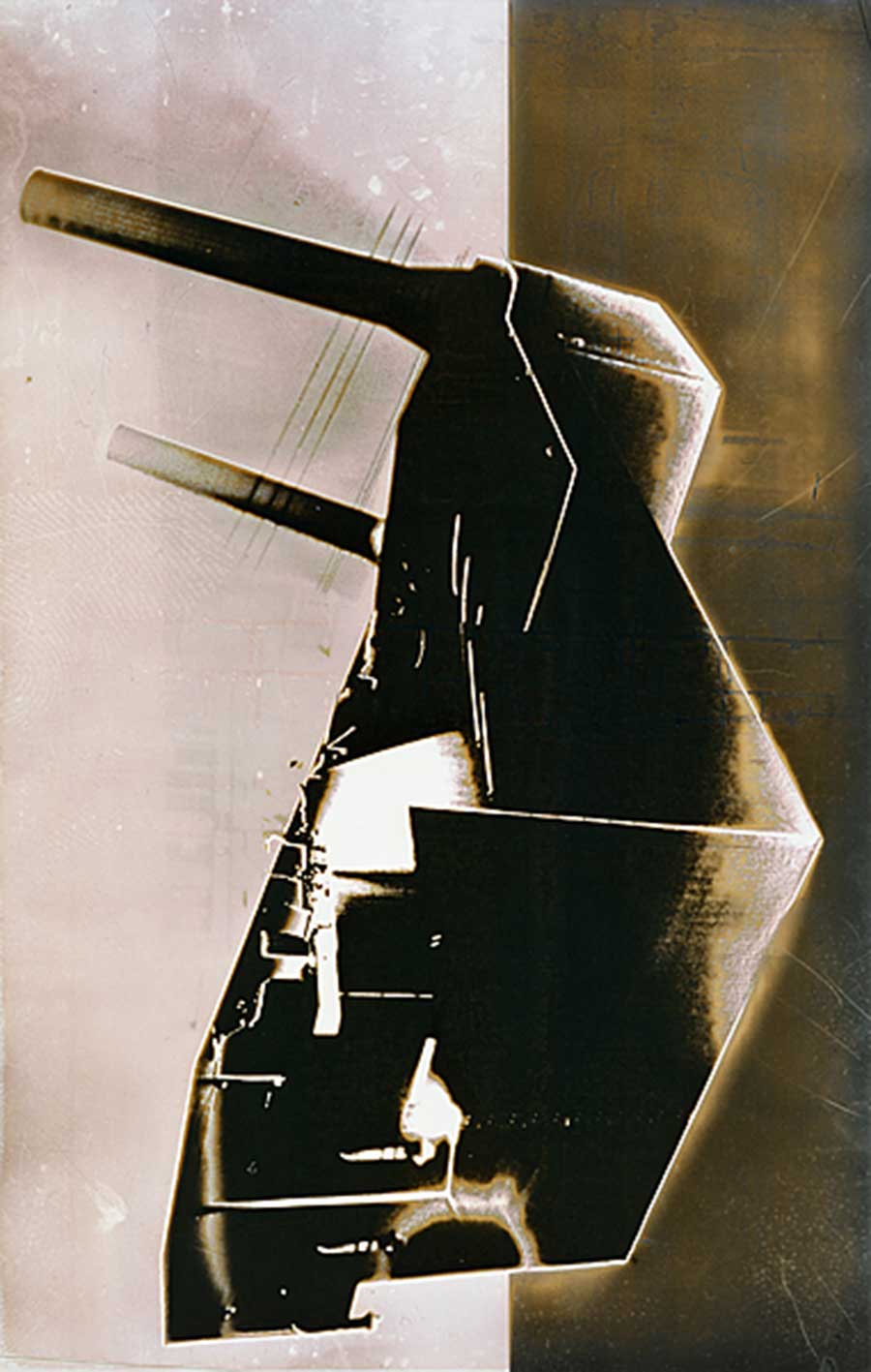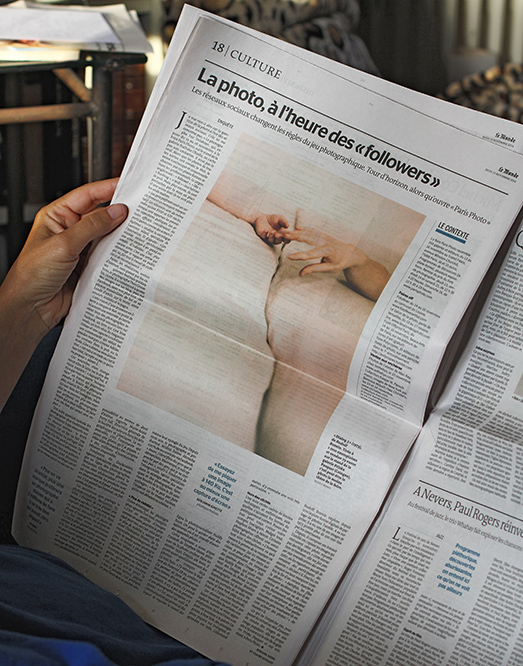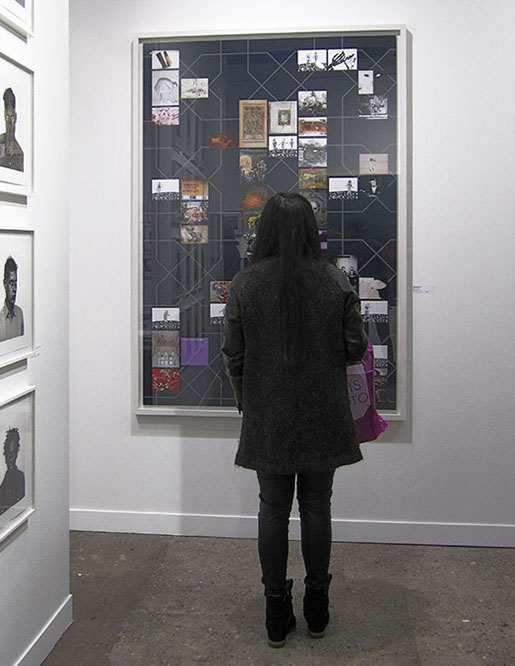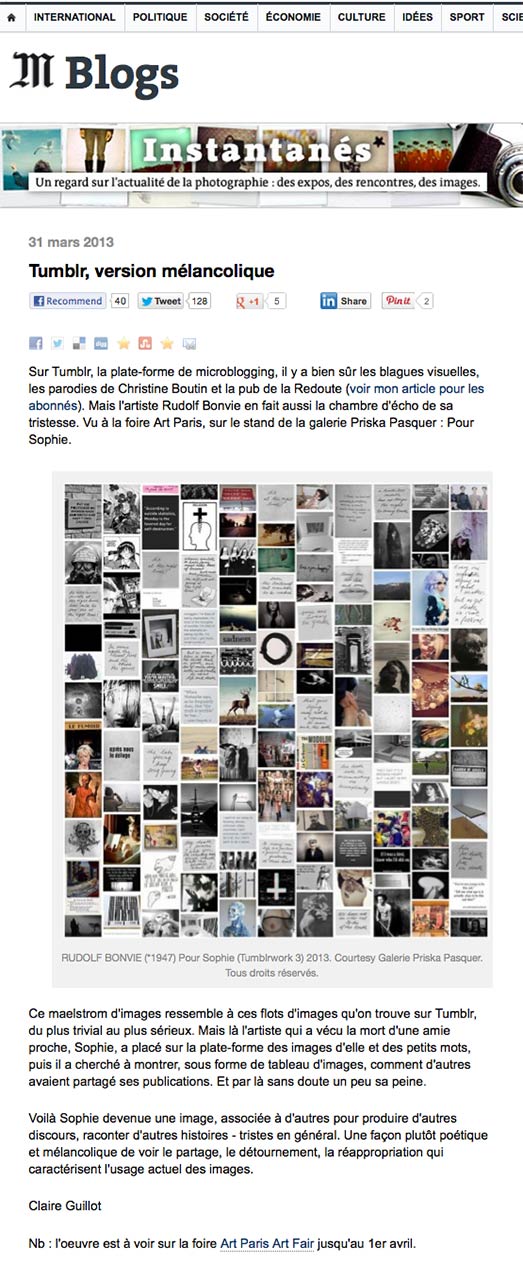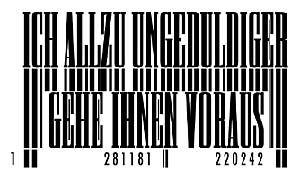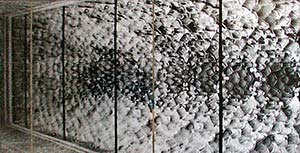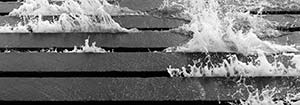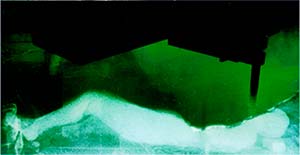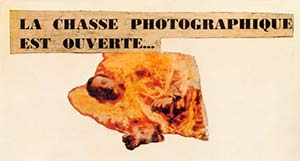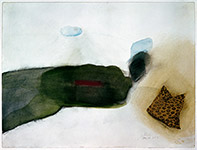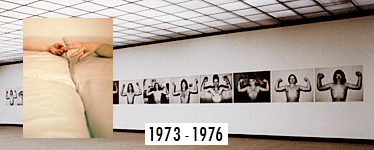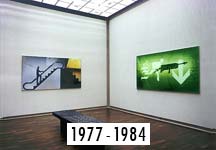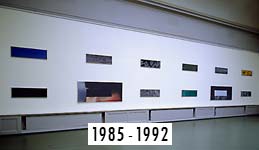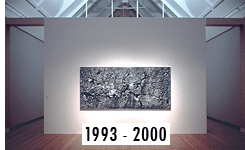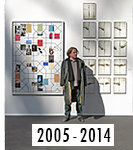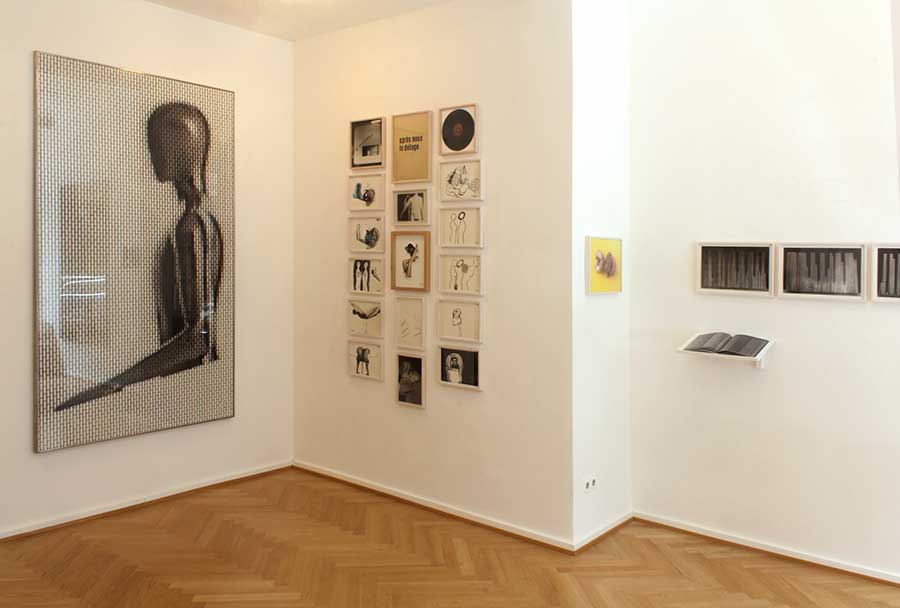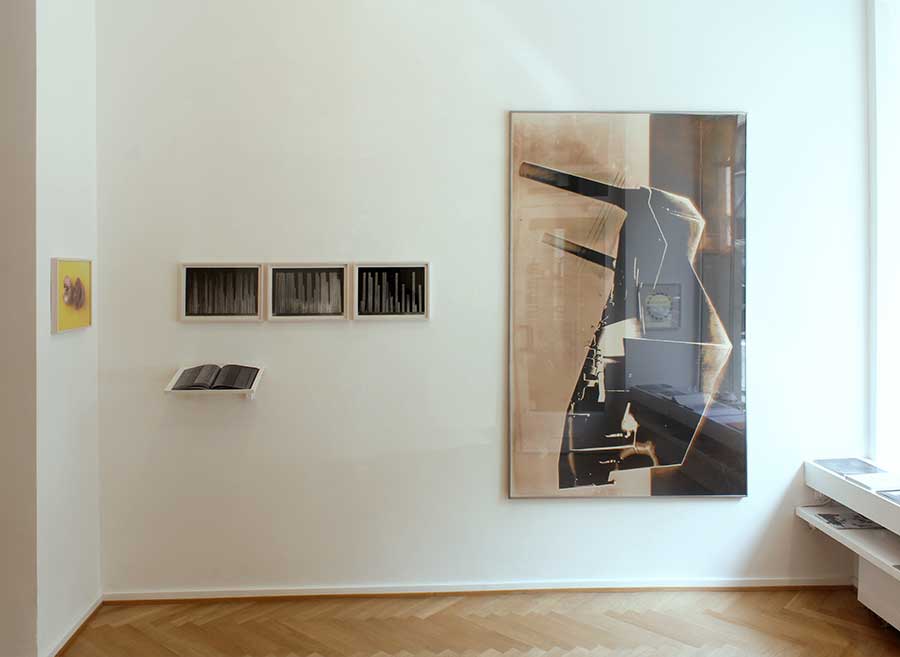Rudolf Bonvie:
“In my Tumblr works, I am examining the changing perception
of my artistic work in the World Wide Web.
While visitors to my homepage were
only passive observers (Web 1.0), they can now –
thanks to today’s social media software,
“like” my pictures or “share” or “reblog” them
by integrating them directly in their own homepage (Web 2.0).
Through an architecture that facilitates direct participation,
the perception of my works is changing,
suddenly they are being seen on someone else’s homepage
in a wholly different context.
People’s own images come together
with other people’s to form a new dynamic.
This flood of images means that the generation
of 16- to 24-year-old Tumblr users have new ways of seeing things.
The huge volume of images rushing past them
does not exhaust them, on the contrary,
they love swimming in images,
occasionally singling out one or two to reblog.
Their perceptive faculties are faster, their eyes are keener.
This raises the following questions:
Given this fleeting mass of images,
does this generation still have a need for a picture on the wall?
For something they can touch?
For something static? Something that they can’t click away?
Everyone takes high-quality photographs,
everyone posts them online, everyone joins in.
How do traditional photography and vintage prints
react to these circumstances?”
 |
|||
| 1947
geboren in Hoffnungsthal lebt und arbeitet in Köln né en 1947 à Hoffnungsthal vit et travaille à Cologne |
|||
| Einzelausstellungen
Expositions personelles |
|||
|
1968-73 Studium
an den Kölner Werkschulen |
|
1973 Aquarelle, Lithographien, Fotografien Galerie Hinrichs, Lohmar 1976 Fotografien 1973 - 1976 Galerie Haus 11, Karlsruhe 1979 vorher - nachher Kunstverein Gelsenkirchen (Kat.) 1981 Installation zu dem Tonbandstück: Ich denk nur allein an mich Gesellschaft für bildende Kunst, Trier 1982 La chasse photographique est ouverte... Galerie Magers, Bonn Produzentengalerie, Hamburg 1985 Fotoarbeiten 1974-1984 Kunsthalle Bielefeld (Kat., mit A.Klein) Fotoarbeiten, Skulpturen, Zeichnungen Galerie Schneider, Konstanz 1986 Zeichnungen 1981 -1985 Arthotek, Köln Neue Fotoarbeiten Museum am Ostwall Dortmund (Kat., mit A.Klein) Fotoarbeiten, Skulpturen, Zeichnungen Galerie Schneider, Konstanz 1987 Rhapsodie nucléaire I Galerie Wilma Tolksdorf, Hamburg (Kat.) 1988 Rhapsodie nucléaire II Museum Folkwang, Essen (Kat.) Rhapsodie nucléaire Galerie Klaus Werth, Frankfurt 1989 Portrait I Galerie Kicken - Pauseback, Köln Forum Stadtpark, Graz 1990 Fotoarbeiten 1978/79, Portrait I - III Badischer Kunstverein, Karlsruhe (Kat.) Stadtgalerie Saarbrücken 1991 Städtische Galerie im Lenbachhaus, München (Kat.) Galerie Rudolf Kicken, Köln 1993 Vorstellungsbilder, Galerie Rudolf Kicken, Köln Années 70 - 80 Marie de Mazaugues, Théatre de Verdure 1994 Vorstellungsbilder und Seestücke Espace des Arts, Colomiers (Kat.) Fotohof, Salzburg 1995 Städtische Galerie Villa Zanders, Bergisch Gladbach (Kat.) Sander & Ebert, Darmstadt 1996 Panstwowa Galeria Sztuki, Sopot (Kat.) Galerie Françoise Paviot, Paris Galerie Vorsetzen, Hamburg 1997 photographie /contre, Triangle, Rennes Bibliothèque municipale de Lyon (Kat.,mit A. Klein) Galerie Brigitte Trotha, Frankfurt am Main 1998 Malerei, Kunstraum Hinrichs, Trier Galerie Municipale des Arts, Sfax ( Kat.) Galerie de l´Institut Supérieur des Beaux-Arts, Sfax Maison des Arts, Tunis Goethe-Institut Tunis 1999 Tunisreisen, Galerie Brigitte Trotha, Frankfurt Maximilian Krips Galerie, Köln La Sainte Victoire, Galerie Françoise Paviot, Paris Les voyages à Tunis, Galerie Barnoud, Dijon 2000 peinture numérisée, Goethe-Loft, Lyon 2001 Börsenarbeiten, Kunstraum Hinrichs, Trier 2003 Smart Money,Maximilian Krips Galerie, Köln Galerie Justine Lacroix, Marseille 2004 Capture Galerie Priska Pasquer, Köln 2005 Galerie Barnoud, Dijon 2006 La Sainte Victoire 1997-2003 Galerie J.Lacroix, Marseille 2008 La Chasse photographique 1980 Youtubearbeiten 2007 Galerie Priska Pasquer, Köln 2013 Börsenarbeiten 2001 - 2011 Kunstverein Lippstadt, Lippstadt Dialog Galerie Priska Pasquer, Köln 2015 #bonvie 70s/80s Galerie Priska Pasquer, Köln Gruppenausstellungen (Auswahl) |
|
Gruppenausstellungen |
|||

Galerie Priska Pasquer, Exhibition, May 1 - June 27, 2015
Tumblrwork 10 (lemons after Chernobyl)
Photowork, 2015
226 x 120 cm, Edition of 3
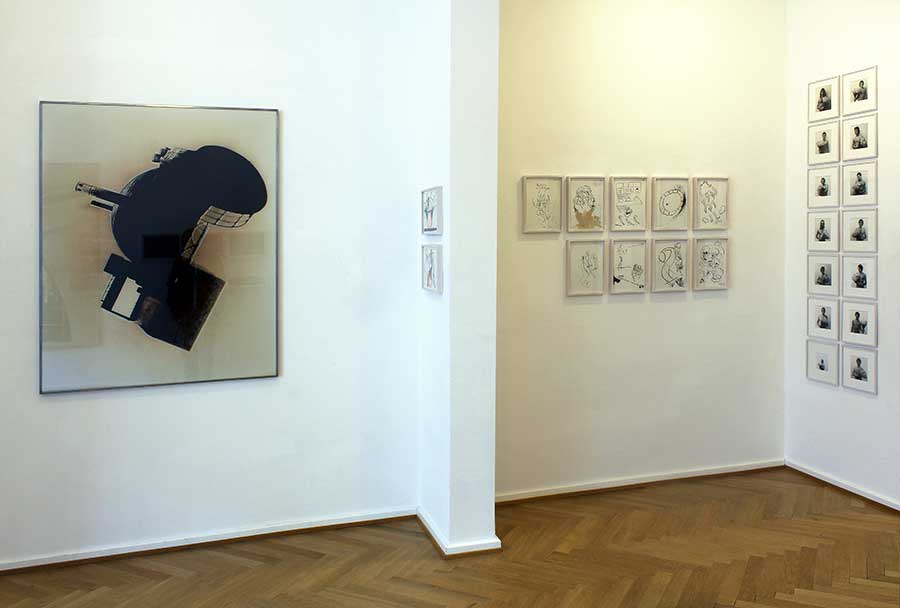
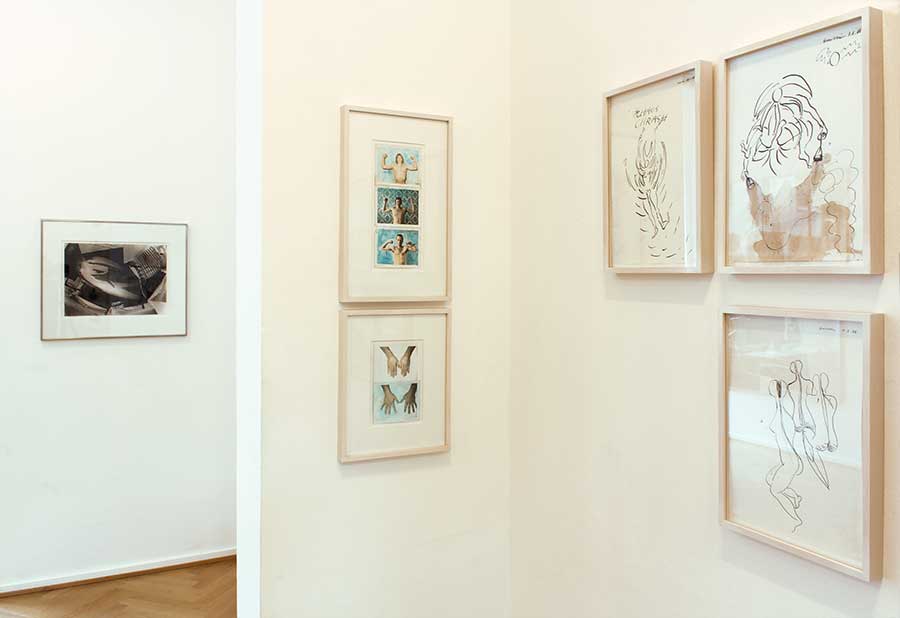
The exhibition will feature Rudolf Bonvie’s photographic works, polaroids, drawings and ceramics from the 1970s and 1980s. Even at that early stage, the artist was exploring themes that define our everyday lives more and more today, such as a growing narcissism and fears of nuclear disaster.
RUDOLF BONVIE (born 1947) is regarded as one of Germany’s first media artists, one whose work explores the function and impact of communication with images. In his multifarious body of work, he combines social questions with aspects of photographic theory. The artist’s critical observations revolve mainly around three thematic issues: the growing narcissism in our society, the exuberant flood of images and the looming threat of nuclear disaster.
Having presented BONVIE’s latest series of works – digital collages generated via Tumblr – last year, | PRISKA PASQUER is now shifting its focus to his works from the 1970s and 1980s. The selected photographs, montages, drawings and photographic works shed light on the artist’s undeniably media-critical outlook and on the analytical rigour that has always characterised his work. And: they are alarmingly relevant to the times we live in.
NARCISSIM
One of the central themes in RUDOLF BONVIE’s work is the impact that the reproductive media have on society and how they determine how we see people. In 1977, he published the photo series “14 Personen – 25 Narzissen” (14 People – 25 Narcissists), half-length portraits of naked young men holding bunches of flowers. Conceived as counterparts to the bodybuilder series “Kraft” (Power), the unusual shots call into question common stereotypes. Both series of pictures can also be seen as early critiques of the growing egocentricity in our society. In this connection, BONVIE also drew on the famous words of Madame de Pompadours “Après nous le déluge” (After us, the deluge). Today, almost 40 years after these works were created, the self-centred mania for self-optimisation has reached a level that would have been unimaginable back then. And the contemptuous, self-obsessed utterance by the famous mistress – a master of self-staging, incidentally – seems to sum up the attitude of much of our society.
FlOOD OF IMAGES
Over 30 years ago, RUDOLF BONVIE was already denouncing a society that was obsessed with taking photographs. In his 1980 series “La chasse photographique est ouverte” (Hunting season for photographs is open), he criticises the kind of sensationalist photojournalism that wields cameras like weapons. In the following years, BONVIE continued to develop the theme centring on how the human image is typecast and reduced, alienated and deindividualised. Faceless figures feature not only in his drawings but also in his photographic works – stereotyped shapes that call to mind the figurines of Oskar Schlemmer. A prime example of this is the expansive photographic work “Piktogramm”, developed by the artist in 1984 based on a video recording. The pictogram projected through a screen is a symbol of the radical reduction of the human image through the reproductive media of photography and video.
NUCLEAR DISASTER
The Chernobyl nuclear disaster of 1986 was a historic event to which RUDOLF BONVIE devoted one of his most important works. He immediately understood that the magnitude and significance of this event could not be conveyed by means of conventional (image) reporting. The “Rhapsodie nucléaire” is based on starkly alienated photographs of nuclear power plants. The buildings appear detached, abstracted and flattened, almost unreal – yet at the same time with an objective, rational identifiability in their symbolic character. “The power of these pictures lies in their inadequacy when compared with the unimaginable, incomprehensible reality.” (Erich Franz).While his photographic works attempted to capture the permanent threat posed by nuclear energy, BONVIE also explored the response to the disaster in the print media. Between 30 April and 1 June 1986, he collected all reports about the nuclear accident published in Cologne daily newspaper Kölner Stadt-Anzeiger and assembled them chronologically and column by column into a three-part picture diagram. This visual interpretation alienates the verbal news material while at the same time exposing the speechlessness masked by the supposed readability: the remembrance work is a monument to our ability to be horrified by something directly and then to forget about it quickly. BONVIE has now compiled the texts together again in a small book.The work cycle “Rhapsodie nucléaire” met with an enthusiastic response ten years later in an exceptional project. To coincide with the tenth anniversary of the Chernobyl reactor disaster, RUDOLF BONVIE designed a dinner service called “Über die Schönheit des Atomkraftwerks” (On the beauty of the nuclear power plant). The ceramic service consists of an underplate, a large plate, a plate and a coffee cup. All pieces feature hand-painted decorations from stylised nuclear power plants. The service is an angry, ironic comment on the human tendency to suppress and forget: how are we supposed to eat from plates decorated with reactor images without the food sticking in our throats?All the series of works that RUDOLF BONVIE has created on the subject of nuclear power plants are still very relevant to the present day – 29 years after Chernobyl and five after Fukushima.
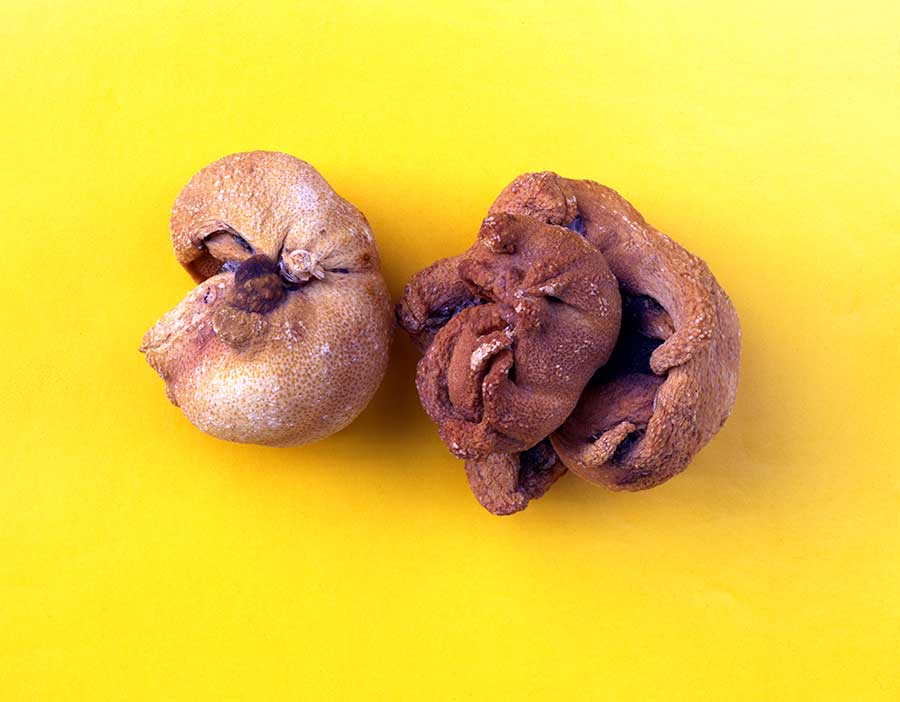
Lemons after Chernobyl (26.04.1986)
photowork, 1993, 31 x 40 cm, edition of 100
Tumblrwork 10 (lemons after Chernobyl)
photowork, 2015
226 x 120 cm, edition of 3
